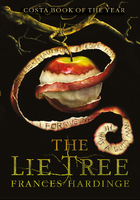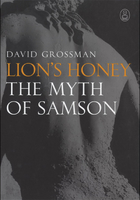'It's usually pretty dark, smelly, uncomfortable and physically demanding. The days are long and you come home filthy and stinking of burnt plastic. There's nothing glamorous about it.
But it is fascinating.'
Niamh Nic Daéid, fire scene investigator
Sunday, 2 September 1666. A family servant coughs himself awake in Pudding Lane, London. Realising there's a fire in the shop below, he pounds on the bedroom door of his master, baker Thomas Farriner. The whole household crawl along rooftops to safety, except for the maidservant Rose, who, paralysed with fear, perishes in the blaze.
Soon flames begin licking the walls of neighbouring houses and the Lord Mayor, Sir Thomas Bloodworth, is called upon to authorise the firemen to pull buildings down to stop the fire spreading. Bloodworth is angry at having his sleep disturbed and ignores the firemen's urgent demands for drastic action. 'Pish!' he says. 'A woman could piss it out.' And leaves the scene.
In the middle of the morning, diarist Samuel Pepys experiences 'the wind mighty high and driving [the fire] into the city, and everything, after so long a drought, proving combustible, even the very stones of churches'. By the afternoon London is in the grips of a firestorm, roaring through 'warehouses of oyle and wines and Brandy', wooden houses, thatched roofs, pitch, fabrics, fats, coal, gun powder – all the flammable material of life in the seventeenth century. The immense heat of the blaze makes escaping gases rapidly expand and rise, sucking in fresh air at gale force speeds, feeding the inferno with yet more oxygen. The Great Fire has created its own weather system.
When the fire abates four days later, it has destroyed most of the medieval City of London, including more than 13,000 houses, 87 churches and St Paul's Cathedral. Roughly 70,000 of the city's population of 80,000 are suddenly homeless.
The ashes were still warm when the conspiracy theories started. Most Londoners could not bring themselves to believe the fire was an accident. There were too many coincidences for that; it started among tightly packed wooden buildings, while everyone slept, on the one day of the week when the streets were empty of helping hands, when a gale was blowing, and the Thames lay at low tide.
Rumours of foul play were rife. A surgeon, Thomas Middleton, had stood at the top of a church steeple and watched as fires seemed to break out in several distinct and distant places at once. 'These and such like observations begat in me a persuasion that the fire was maintained by design,' he wrote.
Foreigners in particular were suspected, with one Frenchman beaten nearly to death in Moorfields for carrying 'balls of fire' in a box; they turned out to be tennis balls. Poems and songs expressed the bewilderment at the fire's origin and cause:
It's still unknown from whence our ruine came;
Whether from Hell, France, Rome, or Amsterdam.
Anon., 'A Poem on the Burning of London' (1667)
The desire to know the truth started at the very top. Charles II had lost more property in the fire than anyone else. The king empowered parliament to set up a committee of inquiry into the fire. Scores of eyewitnesses came forward. Several said they had seen people throwing fireballs, or confessed to throwing them themselves. One Edward Taylor said that on Saturday night he went with his Dutch uncle to Pudding Lane, found the window of Thomas Farriner's bakery open, and threw in 'two fireballs made of gunpowder and brimstone'. But as Edward Taylor was only ten years old his account was dismissed. Robert Hubert, the simple-minded son of a French watchmaker, confessed to having started the fire. No one really believed him but because he insisted the jury found him guilty, and he went to the gallows at Tyburn.
One member of the parliamentary committee, Sir Thomas Osborne, wrote that 'all the allegations are very frivolous, and people are generally satisfied that the fire was accidental'. In the end, the committee decided that the dreadful conflagration was caused by 'the hand of God, a great Wind, and a very dry season'.
It's not surprising that the committee arrived at so unsatisfactory a conclusion. For investigators to evaluate complex fire scenes, they need to understand how fire works. Back in the seventeenth century, the scientific knowledge was woefully insufficient. It wasn't until 1861, when Michael Faraday put his lectures on fire into a book, that such understanding became readily available to a wide audience. The Chemical History of a Candle was the published version of six lectures he delivered for a young audience, but it is still regarded as a key text on the subject. Faraday used the candle as a symbol to illuminate the general nature of combustion. In one key lecture he snuffed a candle out by putting a jar over it. 'Air is absolutely necessary for combustion,' he explained. 'And, what is more, I must have you understand that fresh air is necessary.' By 'fresh air' he meant 'oxygen'.
Faraday was an early expert witness, taking with him his findings from the laboratory – sometimes quite literally. In 1819 the owners of a sugarhouse destroyed by fire in Whitechapel, London, sued their insurance company who had refused to pay out £15,000 compensation. The case turned on whether or not a newly developed process involving heated whale oil – which the owners had started using at the factory without the insurers' knowledge – had made the fire more or less likely. Before testifying, Faraday performed experiments on whale oil, heating it to 200°C to demonstrate that 'all the vapours of the oil, except water, are more inflammable than the oil itself'. In court a member of the jury did not believe him, so Faraday set fire to some of the oil's distilled vapours (naptha) which he had brought with him in a vial, 'a most offensive smell being at the same time perceived throughout the court'.
Faraday's most important forensic investigation was into an explosion at Haswell Colliery, County Durham, which killed ninety-five men and boys in 1844. The blast occurred at a time of industrial unrest in the Durham coalfield. The lawyer acting for the grieving relatives petitioned the Prime Minister, Robert Peel, to send government representatives to the inquest. Faraday was among those sent.
The team spent a day visiting the mine, investigating in particular its air flows. At one point, Faraday realised he was sitting on a keg of gunpowder near a naked candle flame. He leapt to his feet and 'expostulated with them for their carelessness'. The jury reached a verdict of accidental death, with which Faraday agreed. But the team submitted a report on their return to London noting that coal dust had played a major part in the explosion, and recommending that the ventilation be improved. The mine owners objected, because of the costs of improvement. The risk was ignored for sixty years, until a similar explosion in 1913 led to the death of 440 miners at Senghenydd Colliery in Wales – the worst mining disaster in UK history.
In the twentieth century, the Fire Service and the scientific community developed fire scene investigation in tandem, encouraged by governments who wanted to know how many fires there were, their origins and their causes. In the 1960s and 1970s investigations became more rigorously scientific: protocols were adopted; new instruments enabled complex chemical mixtures such as gasoline to be identified at fire scenes; and experts in the field began to emerge. Partly as a result of this increased understanding, it is now rare for a fire or an explosion – which is essentially an expedited fire – to cause such horrendous loss of life in peacetime. But when they do, they leave an indelible impression on those who investigate them.
Among those who became the new experts in fire investigation were an Irish husband and wife. Their daughter, forensic chemist Niamh Nic Daéid of the University of Dundee, has continued their legacy, searching for the truth amid scenes of terrible destruction. Niamh explains. 'I have a legacy in forensic sciences, if you like, because my parents were both independent fire investigators, and indeed my mother still does fire scene investigation, so I grew up with it. Myself and my brother used to make our pocket money by sticking Mum and Dad's fire pictures into reports – for five pence a picture. As you can imagine, the conversation around the dinner table was always about fires.'
Whether fire obliterates someone's property or their dearest relative, the investigator works at the point of collision between nature's most violent force and the human world it wrecks. I was forcibly reminded of that when I asked Niamh about fires that had particularly affected her. The first words out of her mouth were: 'The Stardust disco fire.'
I was asleep in my bed in Derbyshire in the early hours of Valentine's Day, 1981. I was a young journalist, based in the northern newsroom of a national Sunday paper. I'd never covered a major disaster but I knew that was about to change when a ringing phone woke me in the small hours of the morning. The familiar gruff voice of my news editor said, 'There's been a major fatal fire in a Dublin disco. It's looking like dozens dead. You're on the seven o'clock plane.'
By the time I got to Manchester Airport, the radio had confirmed what I'd already been told. A massive fire. A horrifying death toll of young people who'd set off for a fun night out and who wouldn't be going home. Inside the airport, journalists and photographers milled around, looking for colleagues so they could hunker down in their own little scrums and divide up the tasks on the ground at the other end.
My own team – three other reporters and two pic men – made our way to a corner of the bar. A double whisky was set in front of me. Even in those hard-drinking newspaper days, I wasn't accustomed to starting my day that way. 'Drink it,' one of my colleagues insisted. 'Trust me, you're going to need it before today's over.'
He was right. When we landed at Dublin, our Irish staff reporter gave us the grim news. More than forty dead. Because I'm a woman, because I was considered to be good with the grieving but also hard-headed enough to get what I'd come for, I was assigned to the death knocks – visiting the bereft families so we could flesh out our story with poignant quotes and photographs of the dead.
I spent the rest of the day on the Coolock council estate, where many of the teenagers who died in the Stardust had come from. The families were in shock, but oddly grateful that someone wanted to mark the passing of their children. I'd never spent a more harrowing day at work. And I was just a spectator. My heart felt hollow when I imagined what the bereaved were going through.
After the first edition deadline had passed, I met up with one of my team at the site of the fire. From the front of the building there wasn't much to see except broken windows and smoke staining the upper part of the facade. Apart from the throat-catching stink of smoke and char, it was hard to believe forty-eight people had died and more than 240 had been injured there. It was the interior of the building that had been devastated by the fire; from the outside, the only giveaway was the number of fire engines and police vehicles crowding the roadway outside.
Niamh Nic Daéid's mother was one of those charged with finding out what happened inside the Stardust disco that night.
The Valentine's Dance at the Stardust was supposed to be a night to remember for very different reasons. Eight hundred and forty-one people, mainly in their late teens, had handed over the £3 entrance fee that entitled them to sausage and chips and the right to dance till two in the morning, thanks to a special late licence.
Twenty minutes before closing, the DJ announced the winners of the best dancing prizes. A minute later, some revellers spotted smoke coming from behind a roller blind to the left of the dance floor. Most of them put it down to a special disco effect and kept dancing.
Behind the blind were five rows of tiered cinema seats. When some of the dancers looked behind the blind they saw some of the seats on the back row ablaze. Their polyurethane stuffing was already emitting black clouds of extremely poisonous hydrogen cyanide. At first the fire was small and controllable, but it quickly grew in intensity. Employees emptied water extinguishers into the flames – to no avail. Within five minutes, molten plastic was dripping on to the patrons on the dance floor; part of the ceiling collapsed on to them; and thick, toxic smoke filled the entire ballroom. Survivors spoke of their shock at the swiftness of it all.
When people panic they instinctively try to leave a building the same way that they came in, so the narrow foyer leading to the Stardust's main entrance quickly became a bottleneck. Those sprinting to the main doors found them locked shut and it took a bouncer crucial minutes to squeeze through the desperate crowd with the key.
But still disaster should have been averted. There were six fire exits in the Stardust. But the owner, Eamon Butterly, had been worried about people opening the doors from the outside and slipping into the venue without paying, so one of the fire exits was locked and others had chains wrapped around them so they appeared locked. Panic-stricken patrons tried, and eventually managed, to kick these doors open. Another fire exit had tables and seats stacked on either side of it; yet another had plastic skips blocking it.
At 1.45 a.m., when the ceiling in the ballroom collapsed and the electricity cut out, around 500 people were still inside. The blistering flames were their only source of light. The Adam and the Ants record that had been playing was replaced by terrified screams. Within nine minutes of the fire being spotted, everything in the Stardust was ablaze – seats, walls, ceiling, floor, tables, even metal ashtrays.
In the mayhem, some people fled into the toilets. Six weeks before the disco, Butterly had heard customers were trying to smuggle alcohol in through the toilet windows, so he'd had steel plates welded to their inside, to complement the metal bars that were already in place outside. When fireman arrived at the scene, eleven minutes after the fire started, they attached cables to the bars and drove away at speed, but only managed to bend them. The people in the toilets were trapped in an inferno of flame and smoke.
Everyone in the surrounding area, in the working-class communities of Artane, Kilmore and Coolock, knew someone affected by the tragedy. The whole of Ireland mourned the forty-eight killed. Five of the dead had been so badly burnt that they could not be identified. (In 2007 their bodies would be exhumed from a communal grave, so DNA analysis could separate and identify them.)
At 8.35 on the morning of Valentine's Day, Detective Garda Seamus Quinn inspected the gutted Stardust. He spent five hours examining the site, finding no trace of accelerants or electrical problems in the area where the fire had first been spotted. He also discovered, by throwing a lit cigarette on to a similar seat, that its non-flammable PVC covering did not catch fire. Had someone slashed a seat and deliberately lit its polyurethane filling?
The British Fire Research Station carried out a full-scale reconstruction of the area where the fire had first been spotted at their hangar at Cardington, Bedfordshire. Investigator Bill Malhotra managed to get seats to catch light both by slashing them open, and by placing several sheets of newspaper underneath them. The flames reached the very low ceiling and started melting the carpet tiles, causing molten drops to fall on to other seats. Within the tight space all the seats heated up, and the boiling drops were enough to defeat their PVC coverings. Once five seats in the back row were in flames, the row of seats in front caught fire, too. Quinn's and Malhotra's experiments both suggested arson.
In June 1982, eighteen months after the blaze, the Irish government published the results of a public inquiry into its origin and cause. On the question of why, the report was ambiguous. 'The fire was probably caused deliberately,' it said at one point. At another, 'The cause of the fire is not known and may never be known. There is no evidence of an accidental origin and equally no evidence that the fire was started deliberately.' The forensic experts who had given evidence were divided. While Quinn, Malhotra and one other thought the fire was most probably caused by arson, two others wouldn't rule out an electrical fault.
The report damned Eamon Butterly for many things, including not complying with electrical safety standards and using locks rather than doormen to guard doors. The cost of employing extra doormen would have been £50 – just over £1 for every life lost. On the question of the armoured toilet windows the report said, 'While their primary purpose was for ventilation, it might have been possible for a person to get through them in an emergency.' Despite all of these points, the report legally exonerated Butterly from responsibility for the fire because it had been 'probably caused by arson'. So in 1983 the state paid Butterly compensation for malicious damages in the region of £500,000. In 1985 the victims' families received an average of only £12,000 each.
The families were far less interested in money than in why their relatives had perished. So much potential evidence had been obliterated that it seemed unlikely they would ever get an answer. But that didn't stop them trying. In 2006 the Stardust Victims' Committee enlisted the help of a new set of forensic experts in a bid to make the case for a new public inquiry. Those experts pointed out that in the reconstruction in the hangar in Cardington the fire had taken thirteen minutes to burn through all the seats and had never breached the roof, whereas the real thing had shot from the first seat it was seen on – at 1.41 a.m. – up into the night sky within five minutes. Something didn't add up.
The experts also drew attention to various witness accounts that supported this view. Eyewitnesses standing outside the building said they had seen flames coming from the roof several minutes before 1.41 a.m. In the weeks leading up to Valentine's Day, Stardust employees had seen a smoke-like substance and 'sparks' coming from the Lamp Room above the Main Bar, which was right by the rows of blazing seats. On Valentine's Day itself, Linda Bishop and her friend had been sitting below a grille in the ceiling, listening to 'Born to be Alive', when they felt a great increase in temperature. Linda looked down at the new digital watch she'd been given for Christmas. It read '1.33'. A barman who had fought the fire on Valentine's Day said he had 'felt a monstrous heat coming from the ceiling. I was positive that the fire started up in the ceiling.'
The Stardust Victims' Committee experts came to the conclusion that the burning ceiling had set fire to the seats, rather than the other way around. They believed that an electrical fault in the Lamp Room – which was located in the roof space and contained spot-lamps and plastic seats – had ignited the ceiling. Right by the Lamp Room was a storeroom, and the experts thought the original inquiry had been misled about some of its contents. Eamon Butterly's solicitor had provided a list of the 'approximate contents' of the storeroom, including 'bleaches, brio wax, aerosols, gasoline-based waxes and polishes', but did not mention the highly flammable 'drums of cooking oil' which were also present.
Professor of Fire Dynamics Michael Delichatsios reasoned that if enough heat had come from the Lamp Room, the highly flammable contents of the storeroom would have spontaneously combusted. This would account for the extreme speed at which the fire spread, raining burning plastic on to the heads of people on the dance floor, and eventually bringing the whole ceiling down. In 2009 the government commissioned Senior Counsel Paul Coffey to examine the Stardust Victims' Committee case for a new public inquiry. He found the 'probably deliberate' finding of the original inquiry 'so phrased as may well give the mistaken impression…that it is established by evidence that the fire was started deliberately and not a mere hypothetical explanation for the probable cause of the fire'. He recommended against a new inquiry, but suggested the government change the public record to make it clear that the cause of the fire is unknown. So, twenty-seven years after the most lethal fire in Ireland's history, the government officially clarified the cause of the fire as unclear. Because the Lamp Room had been 'totally destroyed', 800 eyewitnesses and scores of dispassionate forensic scientists could never know if it was the true origin of the blaze. The secrets of the fire were destroyed with it. And that is often one of the frustrations of fire investigation.
Fire scenes vary in their complexity, but even relatively simple ones challenge the investigator, who must try to reconstruct a destructive chain of events. Let's take a typical scenario. A passer-by sees a house on fire and calls the fire brigade, who put it out. A structural engineer declares the building safe to enter, and a fire scene investigator like Niamh Nic Daéid arrives to determine the origin of the blaze, why it happened, and how it spread.
First of all – and unusually for a forensic practitioner – Niamh may sometimes interview eyewitnesses. Where exactly did they see the fire? Was there yellow flame and white smoke, which gasoline gives off, or the thick black smoke of burning rubber? Getting the best out of eyewitnesses is a skill. Niamh is often talking to people on the very edge, sometimes after the centre of their world has burnt down. Occasionally the fire investigators may have to 'stop the interview and let the police know that this person might have turned into a suspect'. It is a well-known axiom that industrial fires increase when business conditions get tough, as some firms consider the advantage of a successful insurance claim over a loss-making factory. Arson aside, when accidents do happen people can be cagey. When Niamh asks employees where they were smoking before a fire in their office started, they usually say in the allocated area. But experience has told her that 'when it rains people tend to smoke beside the back door, where the rubbish is'.
The talking over, Niamh walks around the outside of the building and lets things sink in. Are there patterns of smoke on the walls? Which windows are broken? Anything potentially significant on the grounds, like a gas can or cigarette ends scattered about? Then she walks through the building 'hands in pockets, not picking things up', looking for anything unusual. Now she's ready to get dirty. Outside she deals with the gas cans and cigarette ends she saw earlier, 'photographing them in situ with a scale if possible, drawing them on a plan, packaging and labelling them appropriately'. Inside she approaches 'the business end' – where the fire most likely started – in a systematic way, moving from areas of least to most damage, documenting and photographing the scene as she progresses.
As a fire spreads from its point of origin it creates more heat, which ignites more material in a self-sustaining chain reaction ruled by the supply of fuel and oxygen. By the time it stops burning it has often brought down ceilings and walls, which shield things as they fall. The scene is all the more resistant to interpretation once firefighters have directed thousands of gallons of water into it. 'So you've got your burnt-out shell of a house with material all over it. In order to get to the bottom of where it started, you need to de-layer it, like an archaeological dig.' Like a pathologist sawing open a ribcage to perform an autopsy, Niamh has to cause more destruction to reach her answers. She works from the area of least damage inwards because 'if the big black hole in the corner is where the gas was poured, and you march over to that and walk around in it, you'll cross-contaminate your scene'. In extreme cases, the investigator will use tape to construct a grid on top of the scene, number each square and take everything out in buckets to sieve for any evidence that might have survived.
Because fires tend to rise and spread sideways, they sometimes leave the charred outline of a 'V' pointing at their origin. Things are less clear cut when an arsonist has sloshed gasoline throughout a house. Thin lines of severe burning on the ground, surrounded by milder burning, can indicate a gasoline trail, but flames follow the gasoline's path with such speed that a single point of origin is well nigh impossible to discern. If Niamh finds several widely distant instances of equally bad burning, this may also indicate arson; two unconnected accidental fires beginning at the same time in a house is a vanishingly rare occurrence.
Once Niamh has found the most likely origin/s of the fire, she looks for potential sources of ignition – matches, lighters, candles; and fuel – TVs, newspapers, rubbish bins. Arsonists often leave matches behind, assuming they will burn away to nothing. But the powdered rock in a match head contains the fossilised remains of single-cell algae called 'diatoms'. A diatom's shell is made of silica, which is abrasive enough to help you strike the match, and tough enough to endure extremely high temperatures. Each of the 8,000 known species of diatom has a unique shell structure, identifiable through a microscope. Different brands make their matches using powdered rock from different quarries. If forensic scientists can spot the diatoms, they can identify the match brand. Then a search of a suspect's pockets or CCTV footage from local shops can provide incriminating evidence.
In her mind Niamh tries to imagine how the scene was arranged when the fire broke out. Then, as far as possible, she reconstructs it for real. Fire investigators don't always get this right, as Niamh once experienced in the case of a suspicious house fire that had begun on a desk. The police asked the fire investigators to put the sooty items back on the desk in their original positions. When Niamh was called in to review the scene, she thought it best to do her own reconstruction and compare it to theirs.
'The other investigators had reconstructed it in a way not sustained by the physical evidence, not noticing things like a circle where a cup had protected the desk from smoke. They'd put the items in the wrong place and taken photographs which told an incorrect version of the story. With the items put back in their correct position the set of circumstances that created the fire came to life.' In 2012 Niamh ran a series of workshops relating to fire scene investigation in Scotland, which concluded that, whilst many investigators are very well equipped for the job, '97 per cent of fires in Scotland are investigated by personnel who have less than a week's training in fire scene investigation'. While many of these fires are relatively straightforward to investigate, the point relating to appropriate training still remains. Trained fire investigators are critical in the correct determination of the origin and cause of a fire, and this is particularly the case 'in fire fatalities where the investigators have a huge obligation both to the victims and to their relatives to be able to say how individuals died in that fire.'
Mishandling evidence leads to confusion and to conflicting versions of events being presented in court. It's crucial to get it right the first time, not least because the clues are often so fragile. Can you get fingerprints? Can you get DNA? Can you recover information from a hard drive in a melted computer? 'The answer to all of those is "yes", if you have the awareness not to go clumping around damaging material.'
Treading lightly is not easy for Niamh in her heavy-duty steel-toe-capped boots, hard hat and protective overall. The scenes that she enters can contain live electrical hazards, jagged glass, partially collapsed walls. 'It's usually pretty dark, smelly, uncomfortable and physically demanding. The days are long and you come home absolutely filthy and stinking of burnt plastic. There's nothing glamorous about it. But it is fascinating.'
At the suspected point of origin, Niamh collects the debris and sifts through it by hand. 'You would be astonished at what survives. Fires are destructive things, but they generally leave quite a lot of material behind. Things like buttons, lighters, bottles, beer cans, anything metal, survive relatively well. Plastic materials can be melted on one side but fine on another. So you might be able to lift a fingerprint from the underside of a TV remote control.'
Electricity can be your friend in the fire scene, and can provide corroborating physical evidence relating to the cause, origin or spread of the fire. Fire investigators like Niamh crawl around in the muck armed with pliers, following cables as if they were Ariadne's thread guiding her through the labyrinth. 'Many scene investigators don't see the value of the electrical circuitry. It's very laborious and time-consuming work, but enormously useful because it gives solid physical evidence, compared to burn patterns which can be interpreted more subjectively.'
On the wall of her office Niamh has two photographs of a 12-storey building by Piccadilly Tube station in London. The top seven storeys were wrecked by fire to the tune of £12 million pounds' worth of damage. When the investigators first arrived at that scene they spoke to a cleaner who reported that she'd spotted the fire when it was still small, in the lighting system of one particular floor. That gave the investigators a pointer, but finding the exact origin of such a severe fire was nevertheless still daunting. Niamh spent two days in the building with her colleagues before they finally tracked it down to an electrical fault within a water cooler. 'It was a really interesting fire because it involved a lot of use of the electrical system to corroborate the area of origin. So it's dear to my heart, which is why I've got a picture of it on the wall.'
Some fires begin with electrical faults. But others have less innocent origins. Fire scene investigators will often bring in sniffer dogs, whose sense of smell is 200 times more sensitive than a human's, to find ignitable liquid accelerants like gasoline, paraffin and paint thinner. There are about twenty hydrocarbon dog teams in the UK, many of whom wear little boots to protect their paws (and to protect the scene from contamination). 'I've seen them in action and, boy, are they good. They just sit down and indicate when they smell something,' says Niamh.
Once a dog has identified the presence of a hydrocarbon, the fire investigator starts to bag the evidence. Because plastic bags react with the hydrocarbons in substances like gasoline, they put suspicious material into nylon bags and takes it back to the forensic science lab for analysis. If the material is something like a piece of carpet, the investigator tries to take a separate, unburnt piece from the scene, for comparison. In the laboratory forensic chemists will analyse the fire debris submitted. They use various techniques to extract possible chemical accelerants, including 'headspace extraction'. The most common way of doing this involves placing the material in a closed container and heating it to allow vapours to rise off it. These are then collected using an absorbent material, and extracted using a chemical solvent. From this vapour the forensic chemist tries to identify particular compounds, usually using gas chromatography. This is a fairly complex scientific process which causes the chemical molecules within the vapour mixture to separate according to their size. Niamh explains: 'If you can imagine a drainpipe that's ten feet long and you pour molasses down it, so the inside is coated with molasses, and then you get a box of marbles of different sizes and you pour them down it, the little marbles will stick longer than the big marbles. So you get big marbles out first and then little marbles. That's what GC does, in a nutshell. Juries can visualise that, so they go, "Oh, now I get it."'
If the tests show gasoline, then, depending on the case, the next step may be to carry out 'gasoline branding'. Most molecules in a can of gasoline will evaporate at room temperature (which is why you can smell it), but manufacturers put additives in their gas which do not evaporate. The additives make car engines run more efficiently, and can survive very high temperatures. They are also quite specific to different brands. Additives are extremely stable and can stay on clothes until they are washed out with detergent.
Establishing a gasoline brand was important in obtaining convictions following one of the most distressing house fires in my recent memory. At 4 a.m. on 11 May 2012, a fire began burning the inside of the front door of 18 Victory Road, Allenton, Derby. Two minutes later, it had raced up the carpeted staircase to the open doorway of a bedroom full of sleeping children. Their father, Mick Philpott, called 999 – 'Help me! My babies are trapped inside the house!' Jade, John, Jack, Jesse and Jayden Philpott, aged between five and ten, died at the scene, and Duwayne Philpott, aged thirteen, died later in hospital, all from smoke inhalation.
Hours after the flames had been put out, Mat Lee from Derbyshire Fire Service arrived at the scene. A colleague had found an empty gas can and a glove near Victory Road, so Lee was on especially high alert for arson. He removed the top layer of debris from underneath the front door, and a hydrocarbon dog started barking. Lee packaged the material and sent it off to forensic chemist Rebecca Jewell for analysis.
Five days after the blaze, the parents of the dead children, Mick and Mairead Philpott, gave a press conference to thank friends and family for their support. But their behaviour aroused police suspicions. Assistant Chief Constable Steve Cotterill felt that Mick acted like an 'excited child' instead of a grief-stricken parent. 'I would have expected him to be completely and utterly destroyed,' Cotterill said later. 'It was a sham, in my view.'
The police put the Philpotts under 24-hour covert surveillance. A bug in the couple's hotel room picked up Mick telling his wife: 'You make sure you stick to your story,' and later, 'They're not gonna find any evidence, are they? You know what I mean?' On 29 May, the Philpotts were arrested on a murder charge (which was later downgraded to manslaughter).
Over a period of six months Rebecca Jewell received various samples from the scene and from the defendants' clothes. In the abandoned plastic tank, she found a mixture of additives including those from Shell gas. She found traces of gasoline in the carpet under the door of the house, but couldn't tell which brand it was because the additives were contaminated by a chemical from the carpet underlay. She found Shell additive on Mick's boxer shorts and right trainer. She found Total (another brand of gasoline) additive on leggings, a thong and a sandal belonging to Mairead, and on the clothing of Paul Mosley, who had been charged with helping the Philpotts set the fire.
When the trial began in February 2013 the jury was told that the Philpotts and Mosley had started the fire in a bid to incriminate Lisa Willis, Mick Philpott's former mistress. Lisa had spent ten years living in the house with Mick, their four children, her fifth child from a previous relationship, and Mairead and her children, but had recently left the house and taken her children with her to live with her sister. A custody hearing had been scheduled for the morning after the fire, and Mick Philpott had hoped to pin the arson on Lisa, to prevent her winning the right to keep their children. Mick and Mairead had put all the children to bed in one bedroom, and rested a ladder up against the bedroom window. The plan was for Mick to climb up and rescue them, making him look like both a victim and a hero. But the fire spread too quickly. There was no time to get in through the window and save the children. All three defendants were found guilty of manslaughter; Mairead and Mosley were sentenced to seventeen years in prison, and Mick to life. The Philpott fire dominated the media for weeks; the Daily Mail headlined an article 'Mick Philpott: Vile Product of Welfare UK'. While some were wondering if the Philpotts had been using the kids to generate their £13 per week child benefits, Niamh Nic Daéid's thoughts were somewhere entirely different. 'Why didn't the smoke detectors wake the kids?'
One of her Masters students had been part of the team investigating the fire. Together they decided that for his dissertation he would look into the ability of smoke alarms to wake children. They asked the parents of thirty children to set off the smoke alarms in their properties at random hours of the night. 'Eighty per cent of these children did not wake up, even though some of them had the alarm in their bedroom.' The variable frequency detectors designed to address the problem of heavily sleeping children seldom worked. Some of the most effective alarms are reported to be the ones that allowed the mother to record a message herself: 'So she says, "Get up!" and children respond to the pitch and frequency of her voice.' Now the challenge is to learn the lesson of the fire investigators' research – a challenge Niamh's research team is taking up with smoke detector manufacturers.
The desire for custody of children is possibly a unique instigation for arson. Much more common motivations include revenge, insurance fraud or the desire to cover up after a burglary, or even a murder. But people who try to dispose of a body by setting fire to a house or, like Jane Longhurst's murderer, torching the body itself (see p. 211), are unlikely to succeed. Any forensic investigator dealing with a fire quickly learns to distinguish between the normal effects of fire on a body and evidence which may have a more sinister explanation. Whether or not someone was still alive when the fire started, heat causes the muscles of the body to seize up, drawing the legs and arms up into a classic 'pugilist' stance. Water loss shortens the limbs and causes the body to lose up to 60 per cent of its weight. The facial muscles are distorted and the skin of the limbs and torso bursts, creating tears which an inexperienced investigator could mistake for wounds received prior to death. The bones, made brittle by exposure to heat, often fracture when the body is moved from the scene to the morgue. But, even if a body is badly charred on the outside, it will usually be surprisingly well preserved internally. At a crematorium bodies are reduced to ashes by exposure to 815°C heat for around two hours. While structural fires can reach 1,100°C, they generally don't stay hot enough for long enough to completely destroy evidence of foul play.
Some people love fires so much that they start them with no obvious motive at all. This is the pure arsonist. Their addiction starts small but invariably escalates, and is rarely overcome. It often incorporates a sexual element and can be fiercely compulsive.
One extraordinary serial arsonist started fires in Californian buildings in 1984 and didn't stop until he was arrested in 1991. During those seven years federal agents estimated he set more than 2,000 fires. Joseph Wambaugh wrote a book about him, Fire Lover (2002), and HBO made a feature film, Point of Origin (2002).
The story begins in 1987 when Captain Marvin Casey of the Bakersfield Fire Department was summoned to a fire in a fabric store. As soon as he got there he was called to another Bakersfield fire, this time in an arts and craft store. This second one had been extinguished before it overwhelmed the building, and Casey was able to recover a time-delay incendiary device – a lit cigarette placed alongside three matches, rolled up in a yellow sheet of notepaper, and held together with an elastic band. The arsonist had moved the cigarette up so its base was in contact with the match heads, giving him up to fifteen minutes before the cigarette burned down, and fire erupted.
Over the next few hours Casey heard of two more fires in Fresno, 100 miles down Highway 99 from Bakersfield. It felt like too much of a coincidence; Casey suspected that a serial arsonist was in play. Curiously, Fresno had been hosting an arson investigators' conference which ended shortly before the fires broke out.
Casey sent the incendiary device from the Bakersfield craft store to a fingerprint examiner, who managed to lift a good left ring finger off the yellow notepaper. He put the print through both the state and national criminal record databases, but found no matches.
Casey began to think the unthinkable. Could one of the fire investigators at the conference have set the fires on their way back home? He found out that of the 242 officers in attendance, fifty-five had left the conference alone and driven south along Highway 99. He decided to ask the FBI for help and rang Special Agent Chuck Galyan in Fresno. 'Fifty-five names of respected arson investigators? I thought Marv Casey was out in left field somewhere,' Galyan said. The case went cold.
Two years later, in 1989, there was another arson investigators conference in Pacific Grove, followed by another almost simultaneous outbreak of fires, this time along Highway 101, which hugs the coast from Los Angeles to San Francisco. Casey couldn't believe it. He worked out that only ten officers with southerly routes home had been at both the Fresno and Pacific Grove conferences. This time Chuck Galyan agreed to ask a fingerprint expert to check the relevant prints from the state database of public safety professionals. The veteran expert made his comparisons. But he failed to find a match.
Between October 1990 and March 1991 a rash of new fires broke out around Greater Los Angeles, in chain retail stores like Thrifty Drug Stores and Builders' Emporium. Glen Lucero, of the Los Angeles City Fire Department, said, 'The fires were occurring predominately during business hours. Most arson fires are set under the cover of darkness. This was highly unusual [and showed] a certain amount of bravado and confidence by the person setting the fires.'
In late March, the fires reached their apogee. Five stores were hit on a single day. The employees of one medium-sized craft store put out the blaze before it properly caught hold. Investigators found an incendiary device there, still in good condition, identical to the one Casey had found in Bakersfield four years previously. Six more of these devices were later recovered, a number of them in pillows, giving rise to the arsonist's nickname – the 'Pillow Pyro'.
The investigators knew they were after a clever, experienced and exceedingly dangerous man. He knew enough to start his store fires in the perfect place to encourage their rapid spread. People in these stores were in grave danger of meeting the same fate as those who had been trapped in Ole's Home Center in South Pasadena in 1984. That explosive fire had started in amongst polyurethane products, resulting in an inferno that burnt with a blue flame and an eerie hissing sound. Badly burnt bodies were blown out of the building by a flashover – when temperatures reach more than 500°C and all the combustible material in an enclosed space ignites explosively. Four people were killed, including a middle-aged woman and her two-year-old grandchild.
In April 1991, a 20-strong 'Pillow Pyro Task Force' was set up to liaise with police departments across California and track down their man. Three investigators visited Marvin Casey in Bakersfield, who eagerly showed them his photo of the fingerprint he had lifted in 1987. Because the print had already been cleared by an expert, the investigators had low expectations. But the Pillow Pyro might have committed a crime in the last four years, so they sent it to Ron George at the L.A. Sheriff's Department.
The Sheriff's Department database had a large collection of fingerprints, of criminals, of all police officers in the county, and of anybody who had ever applied for a police job. This time the examiner satisfied himself that he had a match – Captain John Orr, an arson investigator with twenty years' experience at the Glendale Fire Department behind him. Initially, the investigators couldn't believe that he was guilty, and clung to the idea that the fingerprint must have come from some sort of cross-contamination. On 17 April Ron George rang the Pillow Pyro Taskforce and told an agent, 'It's John Orr's. He shoulda known better. Tell that dummy not to handle the evidence.'
Orr's prints had been on the Sheriff's Department database since he was vetted for a job as a police officer with the LAPD in 1971. They had been happy with his prints, but not with a reference from his previous job which had described him as 'know-it-all, irresponsible and immature'. Further psychological tests confirmed his unsuitability for the role and they rejected him unceremoniously. Nevertheless John Orr's subsequent career in the Fire Service had been distinguished: he had personally instructed more than 1,200 firefighters, organised seminars on fire investigation and written a number of articles for the American Fire Journal. But how would John Orr have come into contact with evidence at a fire scene in Bakersfield, 100 miles from his base in Glendale?
There was only one unpalatable answer. The task force began surveilling Orr and talking quietly to some of his colleagues. One of them had been suspicious for some time. He had noticed that Orr had an uncanny ability to arrive at a fire scene before anyone else, and rapidly home in on its origin. (As Niamh Nic Daéid explained earlier in this chapter, investigators work scenes in methodical phases, before approaching the business end.) But most of Orr's colleagues were incredulous. True, he could be smug when he talked about his investigations, but he was a damn good investigator, and one of their own.
Another conference was soon to be held at San Luis Obispo. The task force thought Orr might strike and wanted to catch him in the act. Agents watched him all weekend, every hour of the day, but he started no fires. It seemed he could feel their eyes on him.
In the end it was Orr's vanity that led to his downfall. He wrote a novel and sent it to a publisher with an astonishing cover letter. 'My novel, Points of Origin, is a fact-based work that follows the pattern of an actual arsonist who has been setting serial fires in California over the past eight years. He has not been identified or apprehended and probably will not be in the near future. As in the real case, the arsonist in my novel is a firefighter.' When investigators got their hands on it, they couldn't believe what they were reading.
The arson attacks mentioned in the manuscript matched many of the Pillow Pyro fires right down to the smallest detail, except for the names. The hero is a fire investigator on the hunt for the serial arsonist, Aaron. He compares the timings of all the fires to the working hours of the firemen in the force and realises that only Aaron could have done it.
On the morning of 4 December 1991 agents arrived at John Orr's home. Under the floor mat behind the driver's seat of his car, they found a pad of yellow lined notepaper. In a black canvas bag they found a pack of unfiltered Camel cigarettes, two books of matches, some rubber bands and a lighter.
The day after Orr's arrest, Mike Matassa of the task force made various calls to people he had worked with over the year. One was to Jim Allen, arson investigator and personal friend, who told Matassa, 'You ought to look at the Ole's fire. Y'know the one at Ole's Home Center in South Pasadena, October 1984? John's obsessed with that one. He was mad when they called it an accident.' When he got off the phone, Matassa had a flash of recall. Along with everyone else in the task force he had been reading a photocopy of Points of Origin. He remembered that in chapter 6 there was an account of a fire in 'Cal's Hardware Store', where five people had died, including a young boy. When Aaron doesn't get 'credit' for starting it he sets another fire in Styrofoam in a nearby hardware store, to expose the investigators' ignorance. The parallels were eerie.
On its own, Points of Origin would not have been enough to secure a conviction. But in conjunction with the other evidence – the fingerprint, and a tracking device that was installed behind the dashboard of his car – John Orr was found guilty of twenty-nine counts of arson and four counts of murder. He was sentenced to prison for life with no possibility of parole. He has never admitted to any of his crimes. But a fire investigator in Points of Origin makes a telling comment: 'The serial thing usually starts way after they have experimented with fire when they're young, and they just continue it if they aren't caught early. As they grow up, it takes on a sexual atmosphere. You know, they are too insecure to relate to people in a direct, person-to-person way and the fire becomes their friend, mentor and sometimes their lover. Actually a sexual thing.'















